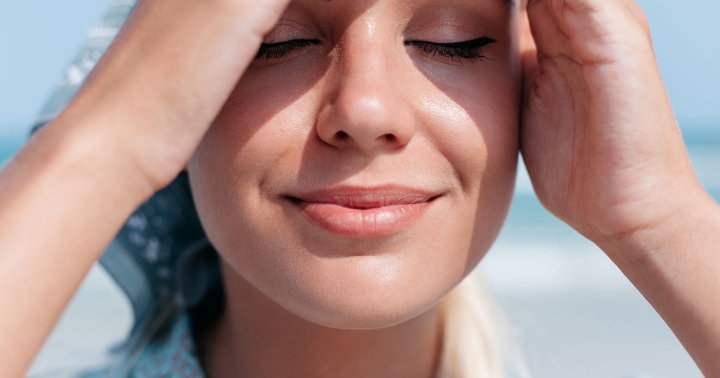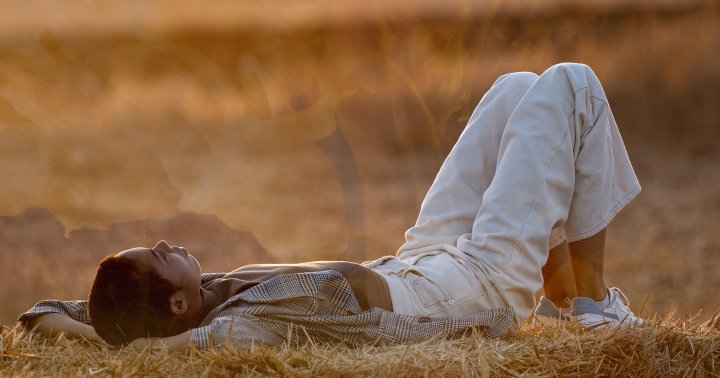Ashtanga Yoga: Definition, Principles, Practices & History
Since the late 1990s, Ashtanga has been considered one of the most popular forms of yoga in the Western world. Ashtanga centers on a vigorous physical practice that includes a series of poses linked together with breath to form...

Since the late 1990s, Ashtanga has been considered one of the most popular forms of yoga in the Western world. Ashtanga centers on a vigorous physical practice that includes a series of poses linked together with breath to form a continuous sequence. The practice demands an intense level of physical strength, flexibility, and endurance, which explains why many people see it as a rigorous and challenging workout. Whether you’re just starting out in yoga, or looking for something new as your goals change, adding an Ashtanga yoga class to your daily workout is a good way to keep your mind and body healthy and strong.
What Is Ashtanga Yoga?
The word Ashtanga is comprised of two Sanskrit words, “Ashta” and “Anga.” “Ashta” refers to the number eight, while “Anga” means limb or body part. Therefore, Ashtanga is the union of the eight limbs of yoga, into one complete, holistic system. These eight-limbs of yoga represent the various branches of the philosophy of the yoga sutras that form the foundation in the Ashtanga Yoga School. The Ashtanga philosophy is to integrate all of the eight limbs of yoga, which include: Yama (moral codes), Niyama (self-discipline), Asana (posture), Pranayama (breath control), Pratyahara (sense withdrawal), Dharana (concentration), Dhyana (meditation), and Samadhi (oneness with the self).
Ashtanga is a very dynamic and athletic form of hatha yoga, made up of six series or levels, with a fixed order of postures. It is rooted in vinyasa, the flowing movements between postures, with a focus on energy and breath. While it is a very physical practice, it also promotes mental clarity and inner peace.
Ashtanga posture sequences
Usually, students begin an Ashtanga practice with five repetitions of Sun Salutation A and Sun Salutation B. This is followed by a set of standing poses, in 5 repetitions, then a set of seated poses. After you have mastered these three pose sequences, your instructor will guide you through the advanced series, Advanced A, and Advanced B, Advanced C, and D.
Where did Ashtanga Yoga begin?
Originally, Ashtanga Yoga was created by T. Krishnamacharya as an individualized practice for his young energetic student K. Pattabhi Jois in the early 20th century. The fast paced sun salutation movements are thought to have been influenced by the exercises of Indian wrestlers and gymnasts. Jois was a dedicated student, and he further refined and promoted this new style and soon began teaching others. These exhilarating and challenging posture flows were designed to purify the body to offer peace of mind, and eventually gave rise to many different styles of hot yoga, flow or Vinyasa Yoga, and power yoga.
The Ashtanga Yoga Research Institute, which promotes the teachings and trainings of Ashtanga, is located in Mysore, India. Pattabhi Jois’s grandson, R. Sharath Jois, is the current director of the institute and is the senior authority on the practice. There are many other famous Ashtanga yoga instructors teaching all over the world including David Swenson, Kino MacGregor, Richard Freeman, Maty Ezraty, Tim Miller, David Williams, Chuck Miller, and Tim Feldmann.
Key Principles and yoga practices
There are several key principles that underlie the practice of Ashtanga. This multiple-pronged approach promotes physical health and mental wellbeing. These five principles are necessary for a successful ashtanga practice.
 Ujjayi pranayama: This specific breathing technique is used throughout the practice. The victorious breath is a slow audible breathing technique used to warm, energize and increase focus and concentration. Additional pranayama techniques are only taught to advanced students.Drishti: A specific drishti, or focal point, is used in each asana. This helps create a more focused and meditative practice.Vinyasa: The core of the practice is synchronizing the breath to the sequence of postures and transitions in the series.Bandha: The engagement of the bandhas, or body locks, is encouraged throughout the class to seal in the prana energy and create core stability.Daily practice: A six-days-per-week routine is encouraged, with Saturday as the rest day. “Moon days,” the days on the full and new moon are also rest days, and women often refrain from practicing during menstruation.
Ujjayi pranayama: This specific breathing technique is used throughout the practice. The victorious breath is a slow audible breathing technique used to warm, energize and increase focus and concentration. Additional pranayama techniques are only taught to advanced students.Drishti: A specific drishti, or focal point, is used in each asana. This helps create a more focused and meditative practice.Vinyasa: The core of the practice is synchronizing the breath to the sequence of postures and transitions in the series.Bandha: The engagement of the bandhas, or body locks, is encouraged throughout the class to seal in the prana energy and create core stability.Daily practice: A six-days-per-week routine is encouraged, with Saturday as the rest day. “Moon days,” the days on the full and new moon are also rest days, and women often refrain from practicing during menstruation.What is the difference between Ashtanga and Vinyasa Yoga?
Ashtanga is a set sequence of asanas while vinyasa is more free-style and improvised. Ashtanga classes begin and end with the class chanting Sanskrit mantras. Vinyasa classes are more popular in gyms and yoga studios and are often heated and play music during the practice.
What is the purpose of Ashtanga?
The intensive physical processes in Ashtanga are all about pushing through mental blocks, and emotional baggage to cultivate mental clarity, mindful breathing, physical strength, flexibility, and endurance. The structure and frequency of the practice is designed to help you quickly improve your body and overall wellness. The set sequence of posture creates a strong framework that allows one to focus on the inner limbs of the yoga sutras.
Benefits Of Ashtanga Yoga
The benefits of Ashtanga yoga are numerous. It is known to be strenuous, so it is great for athletes and people that are looking for a good workout. Like most styles of hatha yoga, Ashtanga focuses on breath, poses, and meditation. A regular yoga practice can improve your flexibility, breathing, and balance. It can increase your stamina, bone density and muscle strength, control your bodyweight, lowers your blood pressure and relieve stress. The benefits of the Ashtanga yoga are not only limited to physical factors. It also helps mentally and spiritually by boosting mental clarity, creating mental calmness and developing better concentration in daily life.
Ashtanga classes
You will find two different types of classes: Ashtanga Led and Ashtanga Mysore. During Ashtanga Led classes, the participants are led by a teacher through the primary, intermediate and advanced series together.
Mysore-style Ashtanga is an open practice time where students move through the same sets of asanas in each sequence but at each students own pace. You will still have the guided help of a trained yoga teacher, but you will need to learn and memorize the asanas and sequences more in this studio class. You can expect to receive more personal attention and hands-on adjustments in a Mysore-style yoga class.
Can beginners do ashtanga yoga?
As it is complicated, precise and physically challenging, Ashtanga is not the best style of yoga for beginners to practice, but beginners are still welcome to start. Because it provides specific and structured movements, you’ll be able to clearly see your improvements and progress. It’s also helpful because the primary sequences start with the kinds of movements and poses that are better suited for beginners. The primary series, also known as Yoga Chikitsa, or Yoga Therapy, is it focuses on centering, and building up a strong and healthy body for the more challenging series that follows. With the emphasis on individual instruction in Mysore-style classes, it’s also great for knowing when you’re doing your asanas correctly.
Is Ashtanga for me?
If you’re a person who needs one-on-one individual instruction, you might benefit from Ashtanga classes. If you’re a seasoned yogi, or you want something that makes it easier to measure your progression in the movements, and is easy to modify the asanas to suit your needs, Ashtanga may be the style of yoga you need. It’s also great if you want to focus your yoga practice on building strength and physical health. Ashtanga can help everyone from beginner to more advanced yoga practitioners.
Ashtanga offers people a highly structured approach to asana practice. You’ll always know when you’re progressing, and be able to tailor your approach to best meet your needs. With regular practice it can bring flexibility, strength, and focus and can also improve your mental state, giving you increased focus and clarity.

 JimMin
JimMin 
































